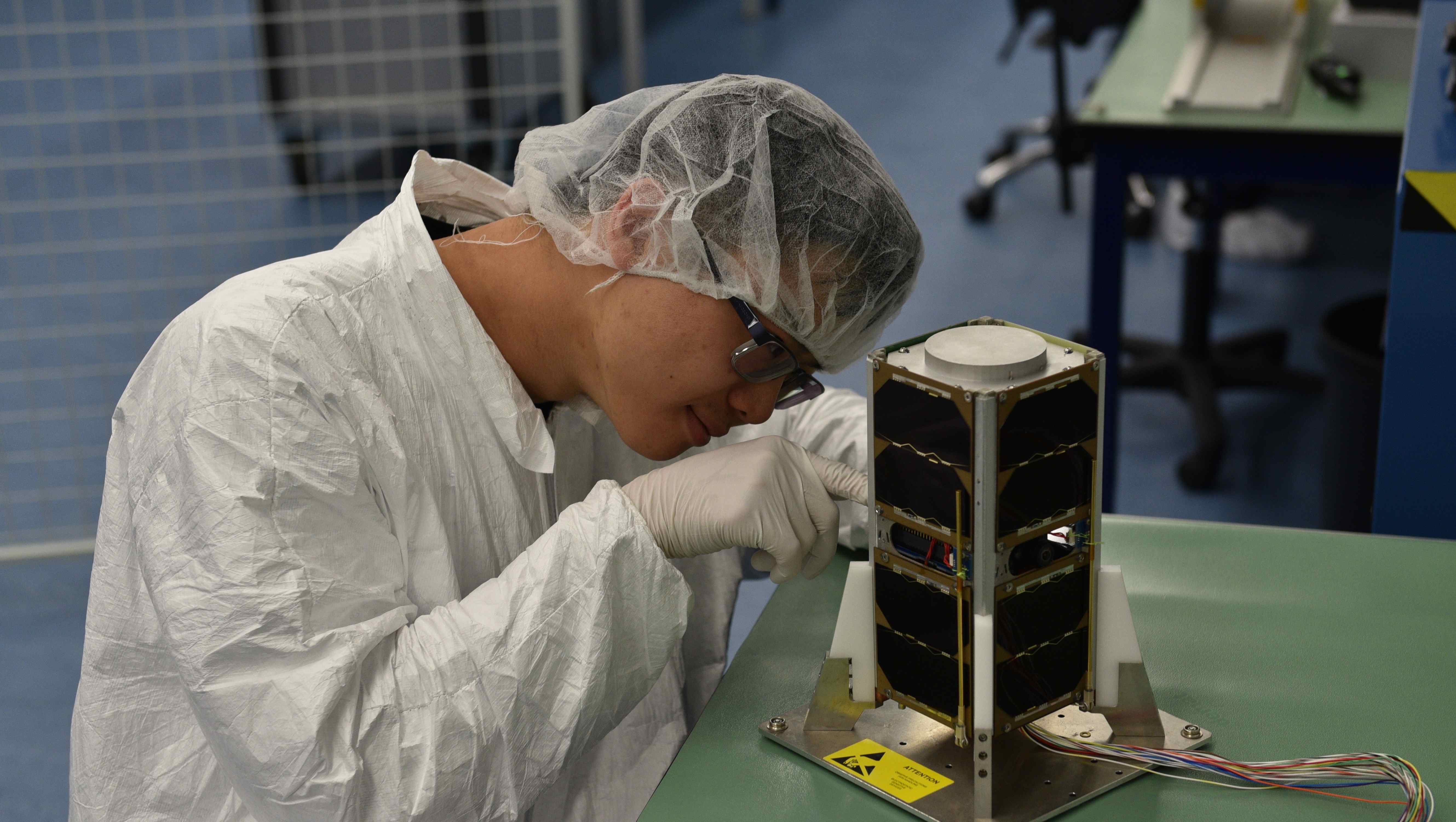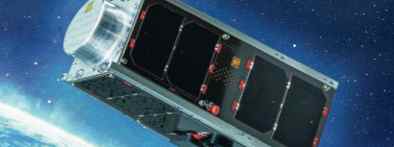University of Sydney scientists are on the front line of a new space age. Their leading edge investigations include assisting with NASA’s search for alien life in the far reaches of the solar system; work on a revolutionary type of rocket thruster – theoretically able to move a spacecraft from Earth’s inner orbit to Mars’s inner orbit without refuelling; and the ongoing development of a new breed of tissue box-sized satellites, crammed with miniaturised sensors and launched from the International Space Station.
Professor Iver Cairns has been central to Australia’s mini-satellite research, leading a collaboration that has built and helped fund a tiny satellite – INSPIRE 2 – as part of a largely European-backed global space project known as QB50. Fifty of these two-kilogram satellites, built by 27 different nations and known as CubeSats, were scheduled to be shot into space on an Atlas V rocket in March 2017, destined for the International Space Station (ISS).
Three of the QB50 CubeSats, including INSPIRE 2, are Australian – the first Australian-built spacecraft to be launched in 15 years.
A couple of months or so after their arrival in space, these tiny satellites will be pushed off the ISS and into orbit to investigate the Earth’s largely unexplored lower thermosphere, the atmospheric region between 80 and 700 kilometres above the Earth’s surface. Each CubeSat will carry an instrument specified by the QB50 project, as well as a number of others chosen by their builders, and the Sydney University-linked CubeSat will gauge the temperature and density of the thermosphere’s plasma, obtaining data important for radars and GPS equipment.
The QB50 project has energised and enthused Australia’s space community. Professor Cairns is now pushing for the next step, a government-funded training centre focused on CubeSats and their applications. “It’s really exciting and it’s a major step”, he says of INSPIRE 2 – which has been put together without any Australian government funding.
“We’re trying to go that next step. People have been saying for ages Australia should be showing it’s a high tech nation. One way to do that is to have a real space effort, one that is world class and is able to do things well,” he says. “We know we can do it”.
Meanwhile, Dr Paddy Neumann is working on an economical way to move a rocket from inner Earth orbit to inner Mars orbit using a unique pulsed cathodic arc ion source, a bit like an arc welder in action. This new ion drive has already broken previously published thrust efficiency records by some 30 per cent.
Unlike traditional rocket engines, which use a chemical fuel burn for thrust (which remains the only type of engine that can push a rocket out of the Earth’s atmosphere), the ion drive can be fuelled by any of a range of different metals, including magnesium, titanium, bismuth and carbon. Neumann tested a range of the different metals for the engine and found magnesium to be the most efficient, although a number of others could do the work economically.
“We believe we could send a payload from low Earth orbit to low Mars orbit in a couple of months – which compares rather favourably with the chemical rocket transfer of six to nine months,” Neumann says. The ion drive’s fuel economy compares favourably as well: “If 15 per cent of my total spacecraft mass in low Earth orbit is magnesium fuel, I can send that spacecraft to Mars”.
Neumann has worked on the ion engine concept for years, beginning with his third year special project, through his honours degree, masters degree and doctorate. The ion drive concept germinated during his third year special project, when he was measuring the speed of ions being discharged from titanium plasma: “And I thought, that’s pretty fast, we could probably build a rocket out of that”.
Physics professor Marcela Bilek designed the ion source that Neumann used for those first tests, and she has encouraged and advised him ever since. Along with Professor David McKenzie, Bilek supervised Neumann’s work, and they have been listed as co-inventors of the intellectual property. “We’ve just published an article, earlier this year, showing that – for magnesium in particular – we have a specific impulse that’s higher than anything that’s been recorded in the literature,” she says. “In other words, this means that you get a lot more thrust out of every kilogram of fuel you carry”.
Neumann has now established a company, Neumann Space, to further develop the ion drive, and he has signed up with Airbus to get the engine space-tested on a rack called the Bartolomeo Platform, which will be attached to the International Space Station.
Halfway around the world, in California, Sydney University student is working with NASA in the search for extra-terrestrial life – vectoring in on Enceladus, one of Saturn’s icy moons. Originally offered a ten-week internship with NASA, Thomson obviously made an impression because he was asked to stay on.
With degrees in engineering and medical science, Thomson is working on a doctorate in biomedical engineering and he sees his future in developing medical applications for space. For the moment, though, he is concerned with the detection of life in the far reaches of the solar system.
There are four key requirements for a planet or celestial body to support life, he says: organics, an energy source, nitrogen and liquid water. “Very few objects in our solar system have good data that tick the box for all four of those, except for Enceladus, which has an ocean under the surface and a big icy plume,” he adds. “That, out of all of the bodies in our solar system, has been determined by NASA to have the best chance that there’s life there, or that there was life there”.
Thomson notes there are many similarities between biomedical engineering and space technology, especially with regard to life-detecting sensors. Biomedical engineering instruments have to be accepted by a living body and care has to be taken to ensure they don’t introduce pathogens into that body. Similarly with space technology, immense care has to be taken to ensure planetary bodies are not contaminated by Earth pathogens.
“You have to make sure that you’re not detecting life that you brought with you on the sensor,” he explains. “You want to detect something unique to that environment”.
https://sydney.edu.au/news-opinion/news/2017/04/06/watch-this-space.html

